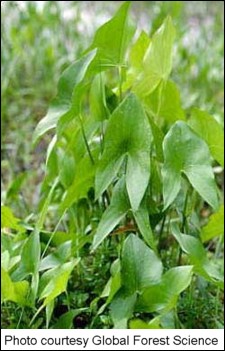 Well, it’s time to admit that summer really has left us once again. Fall is officially and conspicuously here. Not only are the pumpkins and Halloween candy filling the grocery store shelves, but the air has taken on a crisp feel, and (depending on where you live) the leaves are showing clear signs of fall’s arrival. That deep, vibrant green that so pleases the senses throughout spring and summer is now giving way to a host of other shades; fall is a time of richness, of heartwarming colour, and of that special feeling of abundance.
Well, it’s time to admit that summer really has left us once again. Fall is officially and conspicuously here. Not only are the pumpkins and Halloween candy filling the grocery store shelves, but the air has taken on a crisp feel, and (depending on where you live) the leaves are showing clear signs of fall’s arrival. That deep, vibrant green that so pleases the senses throughout spring and summer is now giving way to a host of other shades; fall is a time of richness, of heartwarming colour, and of that special feeling of abundance.
But what is going on in the behind-the-scenes plant world at this time of year? Why do the leaves magically change shade? While some of you may cringe at the thought of grade 10 science revisited, I thought it might be fun to briefly explore the reasons behind fall’s spectacular colour show.
There are two primary things going on for plants at this point in the season: a change in pigment dominance, and a shift in the balance of hormones (sounds like pms for plants). In this article, let’s talk pigments; the hormone topic would take us down the leaf abscission road (aka leaves falling off the tree road), which is a whole story on its own.
As far as pigments go, chlorophyll is it in the plant world. Along with proteins in the plant’s leaf tissues, chlorophyll is what allows light energy from the sun to be converted to a form of chemical energy that the plant can use toward maintenance and growth.
Because chlorophyll is such a handy substance, plants typically have lots of these molecules around. Lots of chlorophyll molecules mean lots of green colour. However, at this time of year, as light levels and temperatures change, the relatively unstable chlorophyll molecules start to break down. Plants are beginning to shut down as they head into dormancy, so chlorophyll’s importance is greatly diminished at this point.
What does this all mean to us? It means a change of visuals. In trees such as Poplar, other pigments that have been there all along, quietly going about their own business, finally get to strut their stuff. The pigments that now become visible are the yellow and orange carotenoids (get it – orange, carrots…?). So the brilliant yellows and oranges we see in the hills are all about the unmasking of carotenoids as chlorophyll molecules break down.
But, you in the front row may ask, what about all those striking reds? Interestingly, the red colour we see in some of the Maples, for instance, is formed from a completely different process. Whereas carotenoids are unveiled by the departure of the dominant chlorophyll, Maple leaves turn bold scarlet because of the appearance of a whole new pigment.
The anthocyanin pigment group is the one responsible for the blues, purples and reds we see in our veggie friends (think grapes or cherries). And this pigment actually develops in the fall during sunny, cool days. So the brighter and crisper the fall, the more brilliant the display of the season’s colours. The reds, the yellows, the oranges, what could be a more beautiful transition from one season to another?
Carotenoids, anthocyanins – such intimidating-sounding terms for the basis of one of nature’s most wonderful and seemingly magical artistic efforts. Go on, I know you want to say it, a-n-t-h-o-c-y-a-n-i-n; isn’t it beautiful?
Zoe Dalton is a graduate of York University’s environmental science program, and is currently enjoying working toward a Master of Arts in Integrated Studies with Athabasca U. She can be reached for comments or questions at zk_dalton@hotmail.com.

